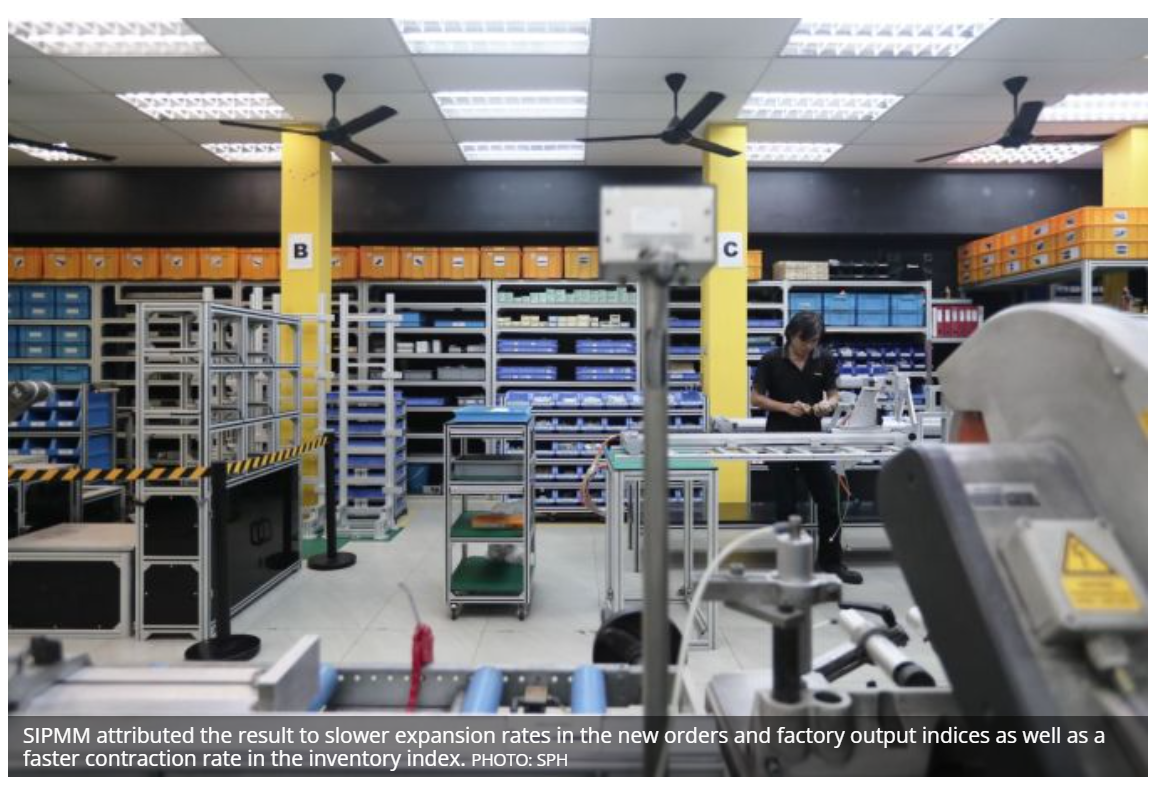Singapore PMI in March lowest since August 2020 amid cooling factory activity in Asia
SINGAPORE’S factory activity dipped further in March, mirroring a region-wide drop in manufacturing sentiment amid rising prices and supply chain disruptions.
Last month’s Purchasing Managers’ Index (PMI) fell 0.1 point to 50.1, marking the third month of decline, according to the Singapore Institute of Purchasing and Materials Management (SIPMM) on Monday (Apr 4).
A reading above 50 indicates growth from the previous month; one below 50 means contraction.
The PMI had stayed in expansionary territory for 21 months – since July 2020 – but the latest reading, is the lowest since August 2020.
SIPMM attributed the result to slower expansion rates in the new orders and factory output indices as well as a faster contraction rate in the inventory index.
Likewise, the electronics sector PMI also dipped 0.1 point to 50.4 point, marking the lowest since May 2021 although this is its 20th month of growth.
In particular, the electronics sector saw its factory output index contract for the first time, while the inventory index also saw a faster contraction.
OCBC chief economist Selena Ling said this suggests that “our earlier concern about the supply chain disruptions showing up more apparently once the current inventories of parts and components are depleted have materialised”.
She noted that the supplier deliveries index has reverted to a contraction while the finished goods index contracted more sharply, despite improvements in the new orders, new exports, imports, input prices, order backlog and employment indicies.
UOB economist Barnabas Gan noted that any further declines to the supplier deliveries index to below 50 in the next few months would be a “clear indication of renewed supply disruption risks”.
Ling said while demand remains healthy, Singapore is clearly not immune to rising cost pressures, including energy prices, as well as supplier delivery bottlenecks that appear to be widespread in Asia.
“Our Q1 manufacturing growth forecast stands at a cautious 3.8 per cent year on year, but if the Ukraine conflict is prolonged and the elevated inflation and supply chain problems are sustained beyond April, then there could be some downside risk to our Q2 growth momentum too,” said Ling.
Gan said he is keeping his forecast of 4 per cent even though risks related to supply chain disruptions and geopolitical tensions are “increasingly tangible at this point”.
China, which is facing its worst Covid-19 outbreak, saw official PMI fall to a 5-month low of 49.5 in March. The Caixin PMI, derived from smaller private manufacturers, tumbled to its lowest point since February 2020 at 48.1, down from 50.4 the previous month.
“Overall, impacted by factors including the Covid-19 outbreaks in multiple parts of China, manufacturing activity largely weakened in March. Supply contracted. Demand was also under pressure, and external demand worsened. The job market was more or less stable. Inflationary pressure continued to rise. And market optimism weakened,” said Wang Zhe, senior economist at Caixin Insight Group.
The war in Ukraine and sanctions against Russia have also disrupted supply chains and pushed up commodity prices, he added.
Other parts of Asia also saw a similar story play out.
The S&P Global Taiwan PMI fell to 54.1 in March, from 54.3, the slowest improvement since August 2020. In South Korea, the S&P Global PMI slid to 51.2, from 53.8 in February, the slowest expansion since November 2021.
Meanwhile, the S&P Global Asean PMI dropped to a 6-month low of 51.7 in March, from 52.5.
“Whilst overall sentiment remained positive, underlying data point to headwinds. The sector continues to be hampered by ongoing supply problems and a widespread scarcity of materials, which is expected to continue over the course of the year,” said Maryam Baluch, economist at S&P Global.
Source: https://www.businesstimes.com.sg/government-economy/singapore-pmi-in-march-lowest-since-august-2020-amid-cooling-factory-activity-in


 Thailand
Thailand




